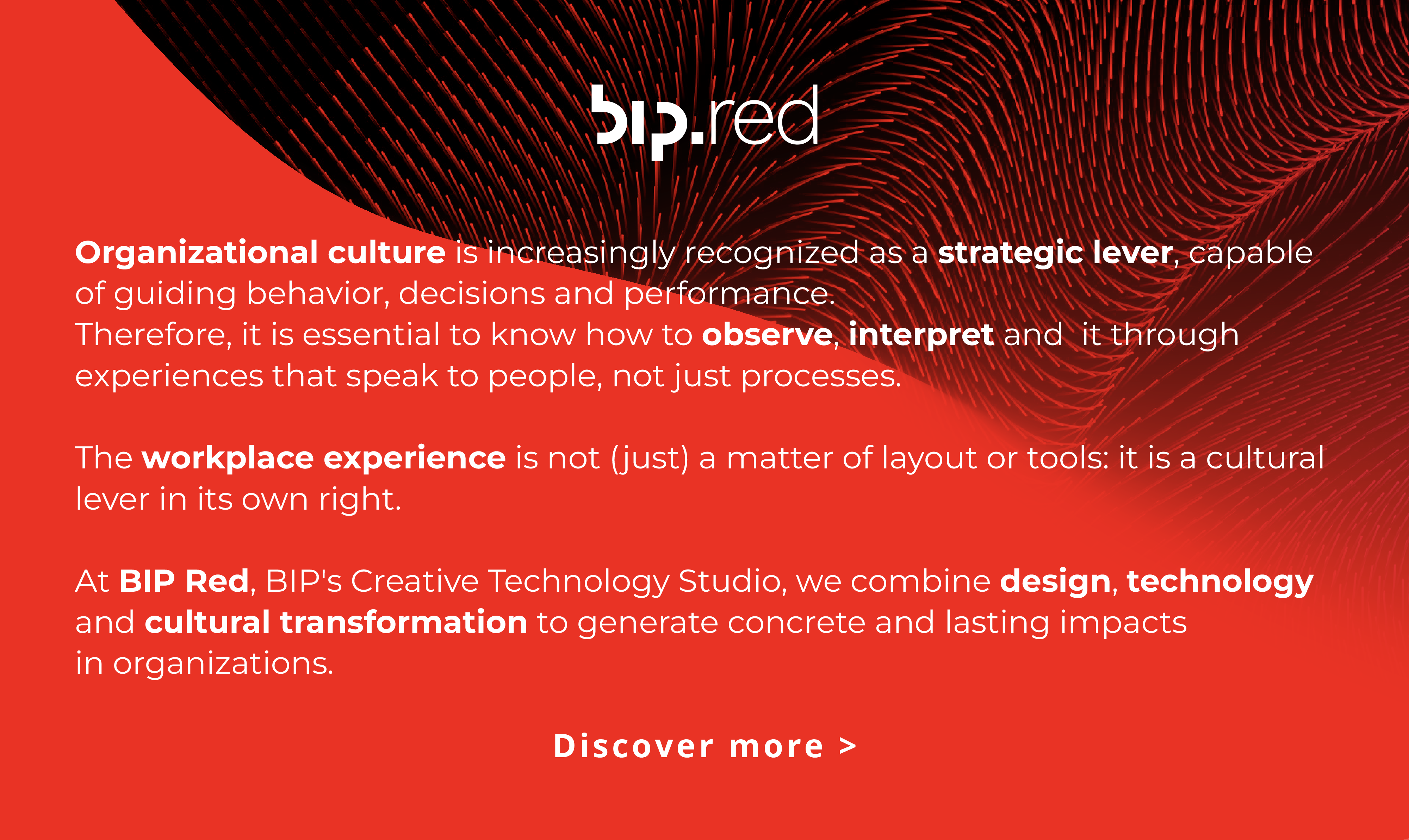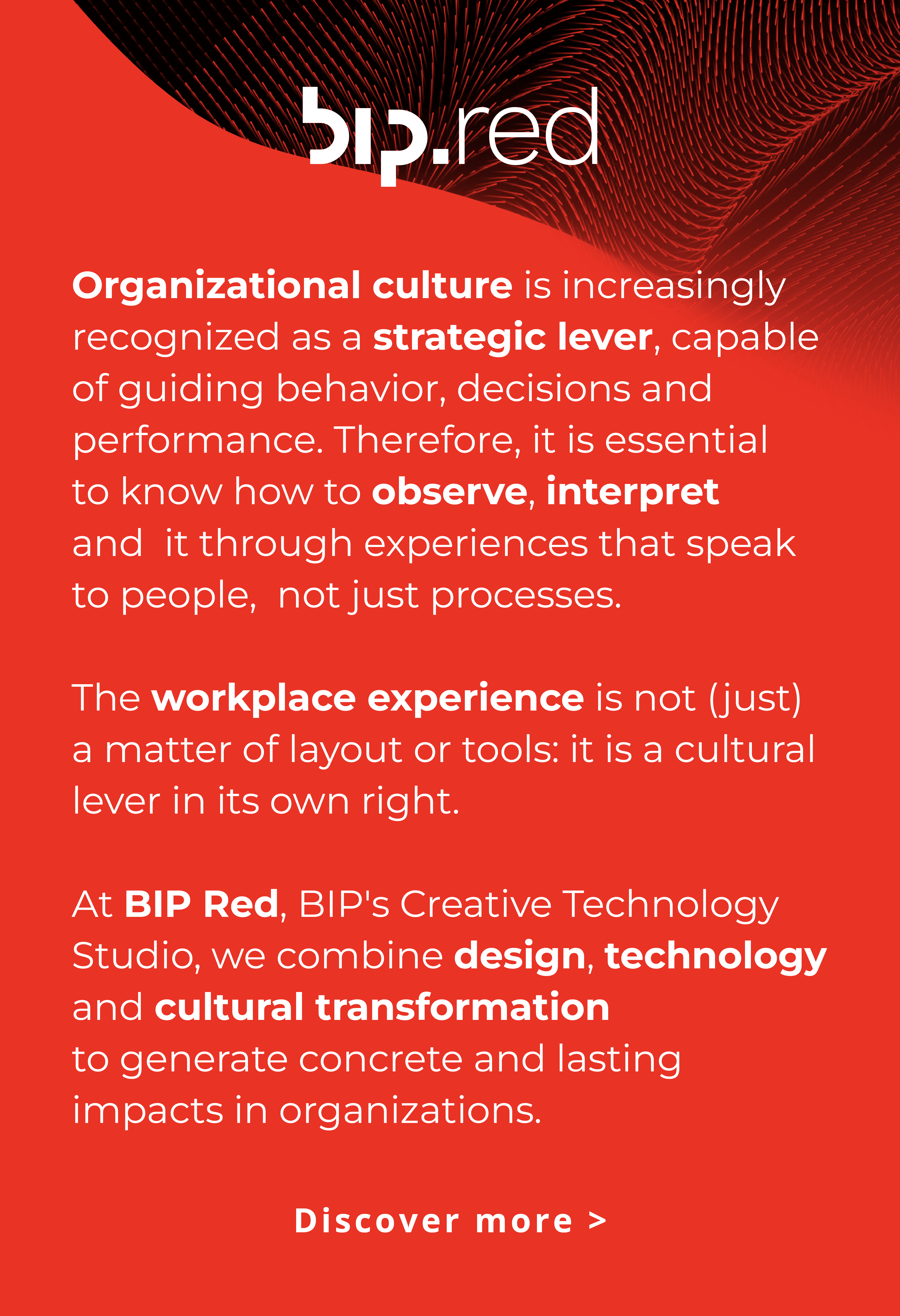Not where you work but how you work: offering a meaningful work experience
Why culture is a strategic organizational lever for organizations
We live in times when traditional models have crumbled, and organizational paradigms are evolving profoundly and continuously. 2020-2021 has been a watershed in terms of working methods, people’s expectations and managerial practices. And it has had lasting effects.
Work is no longer just a place we go to, but an experience about whose meaning we question ourselves.
To regain this meaning, of all the organizational levers available, there is one that, if well understood and activated, has the power to generate lasting value, attractiveness and satisfying performance: culture.
Bias around culture and its strategic value
For a long time, culture has been seen as a soft topic, a nice-to-have at the bottom of the list of more pressing priorities. A topic considered almost exclusively for the HR function, suitable for inspirational presentations but of very little use in truly impacting on business results. The focus was on numbers, processes, KPIs.
Culture? Nice, but not measurable. Not strategic. Not urgent.
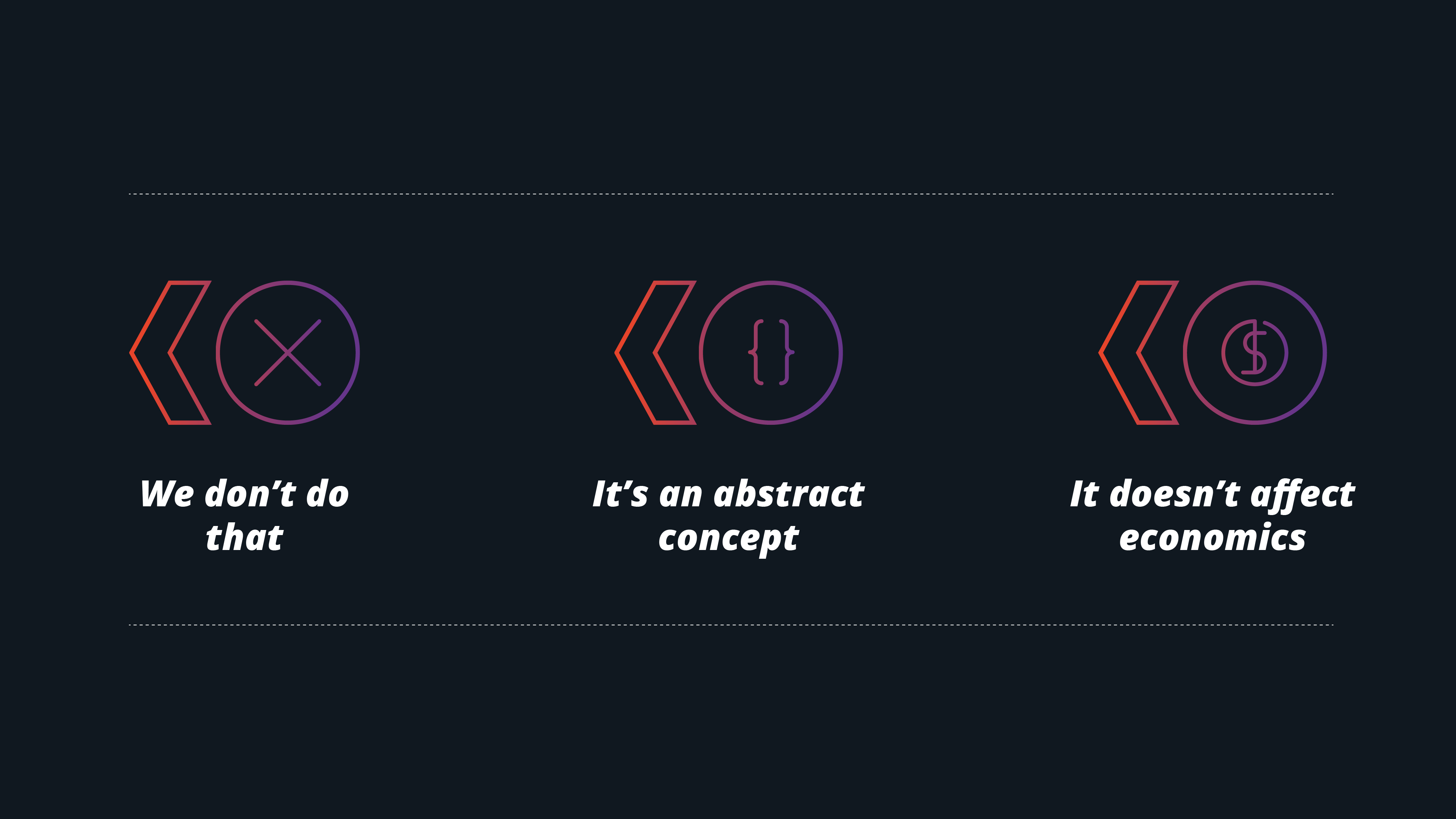
Source: OpenKnowledge
Let’s debunk a few myths.
Culture exists even if you don't know.
Every organization has one because any group of people thinks and acts accord-ing to a shared set of values and beliefs. Thus, culture exists even when it is not explicit, even when it is not stated or no one manages it.
It is concrete and observable.
It manifests itself in the behaviors we have, the languages we adopt, the way we relate to and inhabit physical and digital space. It is the tangible expression of shared values, beliefs, mindsets.
It affects performance.
That is, the organization’s ability to implement a strategy. Culture shapes deci-sions, directs priorities, defines the way people work: therefore, it impacts productivity, innovation and even the internal emotional climate. In other words: it impacts economics.
Nowadays, even the numbers tell us so.
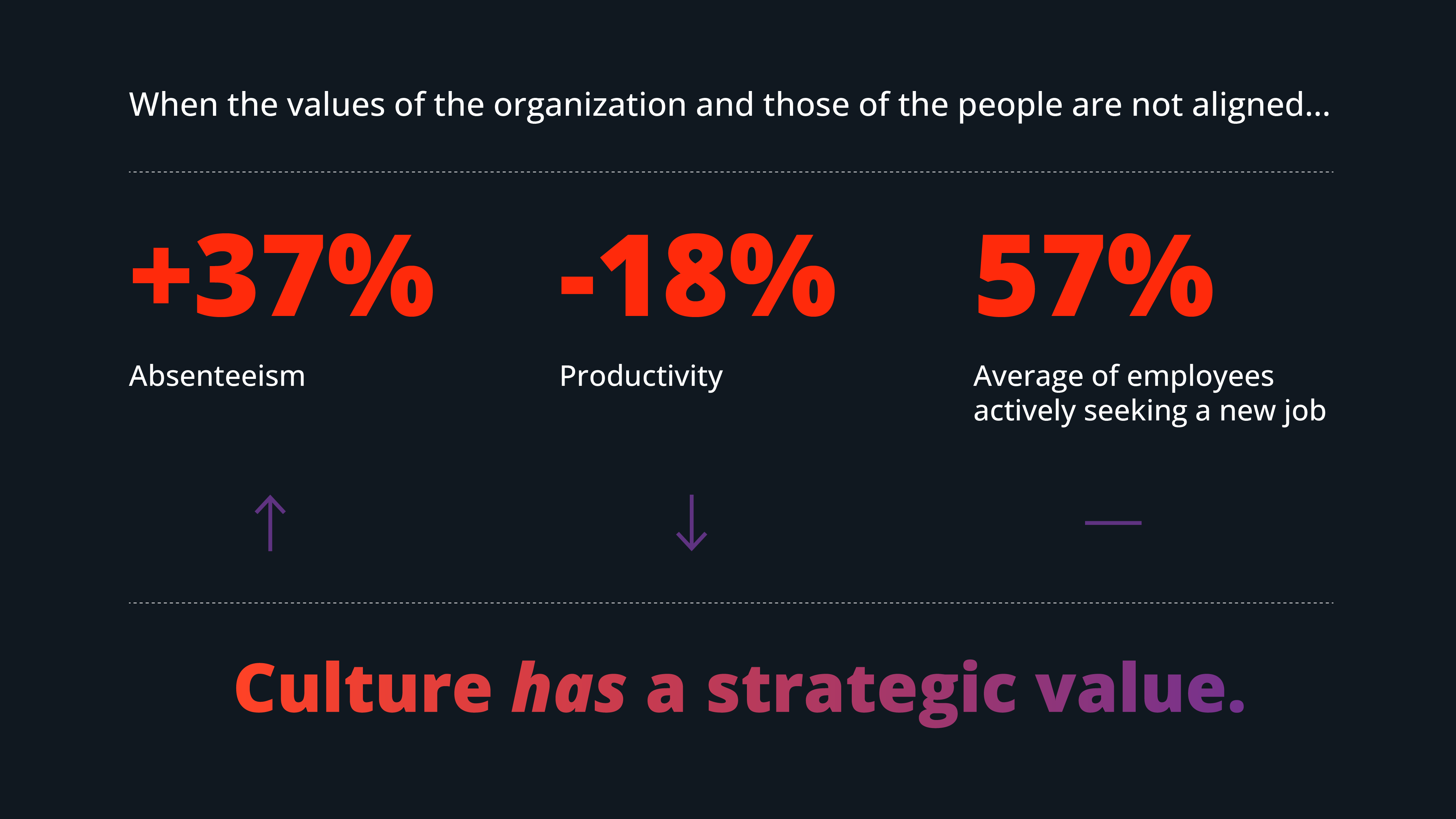
Source: SHRM, The State of Global Workplace Culture in 2024
In a time of job-hopping and post-retention where people build fluid career paths, driven no longer by loyalty to an organization but by loyalty to themselves, personal interests and an individual search for meaning retaining talent is an outdated and anachronistic idea. Rather, organizations should focus on attracting and valuing it when it is most useful and generative for both.
In this context, culture is a concrete and measurable organizational lever and generates fertile ground for providing a meaningful and transformative work experience.
Culture as an organizational bond
Research from this year shows that there is no significant discrepancy between the in-presence model and the hybrid or remote model with respect to employees’ evaluation of collaboration, connection, innovation mentorship and training.
As an organization, therefore, it no longer makes sense to question only where one works. The key questions are how and why one works.
It is no longer a question of spaces, but of places. In English, the distinction is clear: from space – physical, tangible, traversable – we have moved to place, a relational and symbolic space that generates meaning, motivation and a sense of belonging.
The workplace today is an ecosystem.
And culture is its operating system.

Source: OpenKnowledge
Culture thus becomes the real glue of the organization: it can hold people, teams, processes and goals together by transcending the physical boundaries of space and ensuring harmonious and sustainable organizational functioning.
By acting on three integrated dimensions:
- Individual: how I interpret my role, make decisions, relate to work
- Social: how we collaborate, communicate, identify ourselves as a group
- Environmental: how we inhabit and use spaces, physical and digital
Culture provides direction and acts as the organization’s autopilot, defining how it thinks, acts, and performs collectively. It nurtures the experience of meaning, generates cohesion, and makes strategies effectively actionable.
Enabling an effective culture
There is no magic formula or good, bad or perfect culture that applies to every organization.
Every cultural intervention is a work of precision, to be calibrated to the specific context, identity and goals of the organization. The levers to be activated to bring about change in people’s ways of thinking and operating and, therefore, of their overall work experience are multiple, as are the dimensions to be considered: individual, social, environmental.
Culture is not to be forced; it is to be empowered. And its change requires listening, consistency and intentional planning. To intervene in culture is, after all, to act on the invisible to make it tangible and generative.
DECODE – Deciphering the cultural substrate
To act on culture, we must first understand it. In fact, understand them.
Often multiple sub-cultures coexist in an organization: groups of people within it orchestrate their behaviors based on shared sets of values and beliefs, and the coexistence of multiple ways of thinking and working, while a source of richness and innovation, can have negative impacts on the organization’s ability to follow its strategy and achieve expected results.
First and foremost, it is therefore crucial to decode how people think, act, decide, and collaborate, analyzing individual, social, and environmental dynamics to identify levers, barriers, and areas of risk.
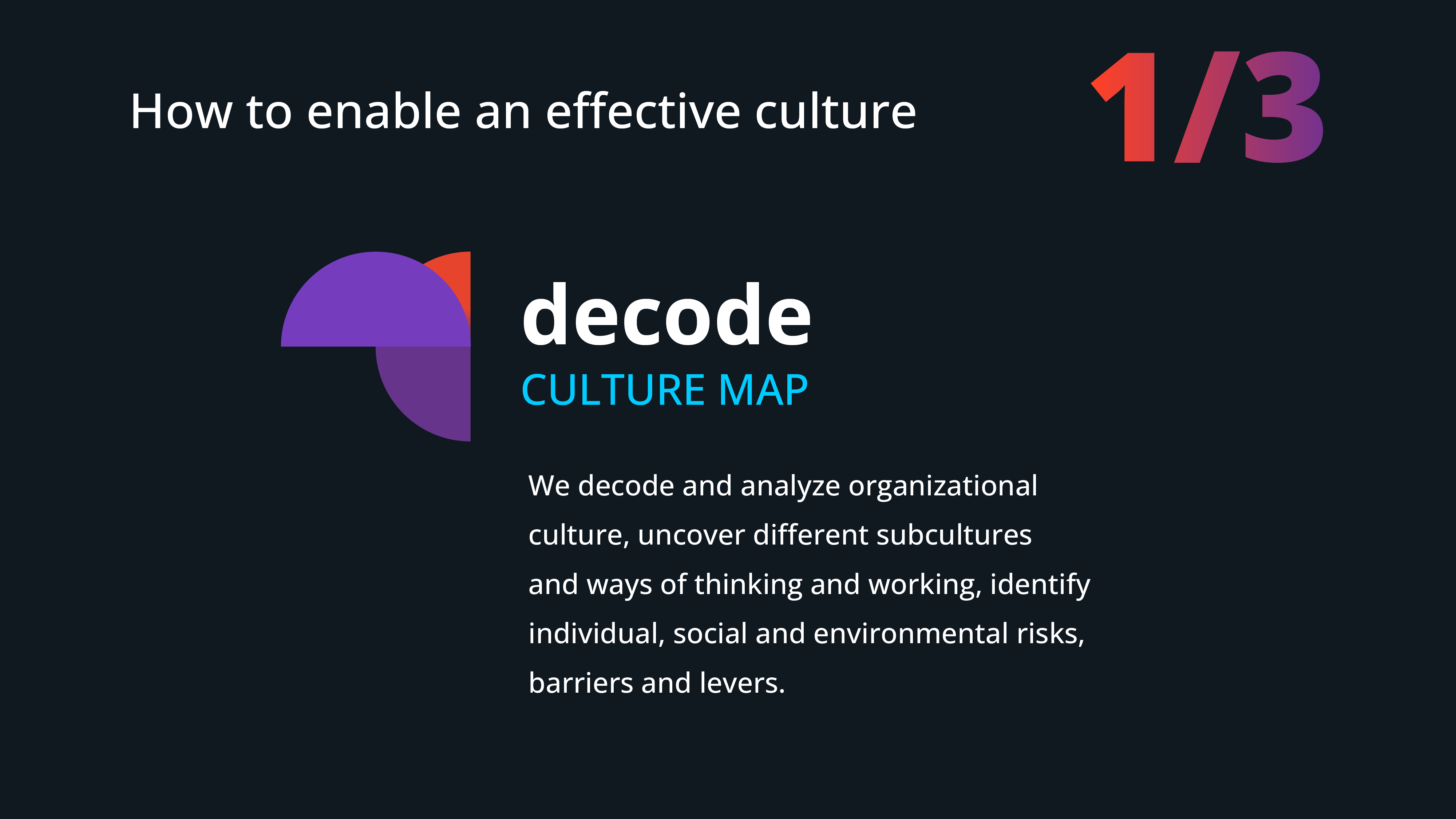
Source: OpenKnowledge
ORIENT – Giving intentional shape to cultural evolution
Culture, if you don’t design it, it designs itself.
This happens spontaneously, chaotically, and sometimes in a dysfunctional way. Instead, to orient it means to knowledgeably guide the operation of the organization in a consistent way with the identity of the company and its goals.
This does not merely translate into a list of values on the manifesto, which is the concise and visual emanation of an articulated thought about them, but implies having to translate them into concrete daily behaviors, rituals and practices that can be observed and evaluated in their consistency with strategic intent.
Designing a cultural intervention means (re)designing a coherent system that guides organizational action at the systemic level and at the same time enhances the individual’s dimension of individual attitudes, peculiarities and potential.
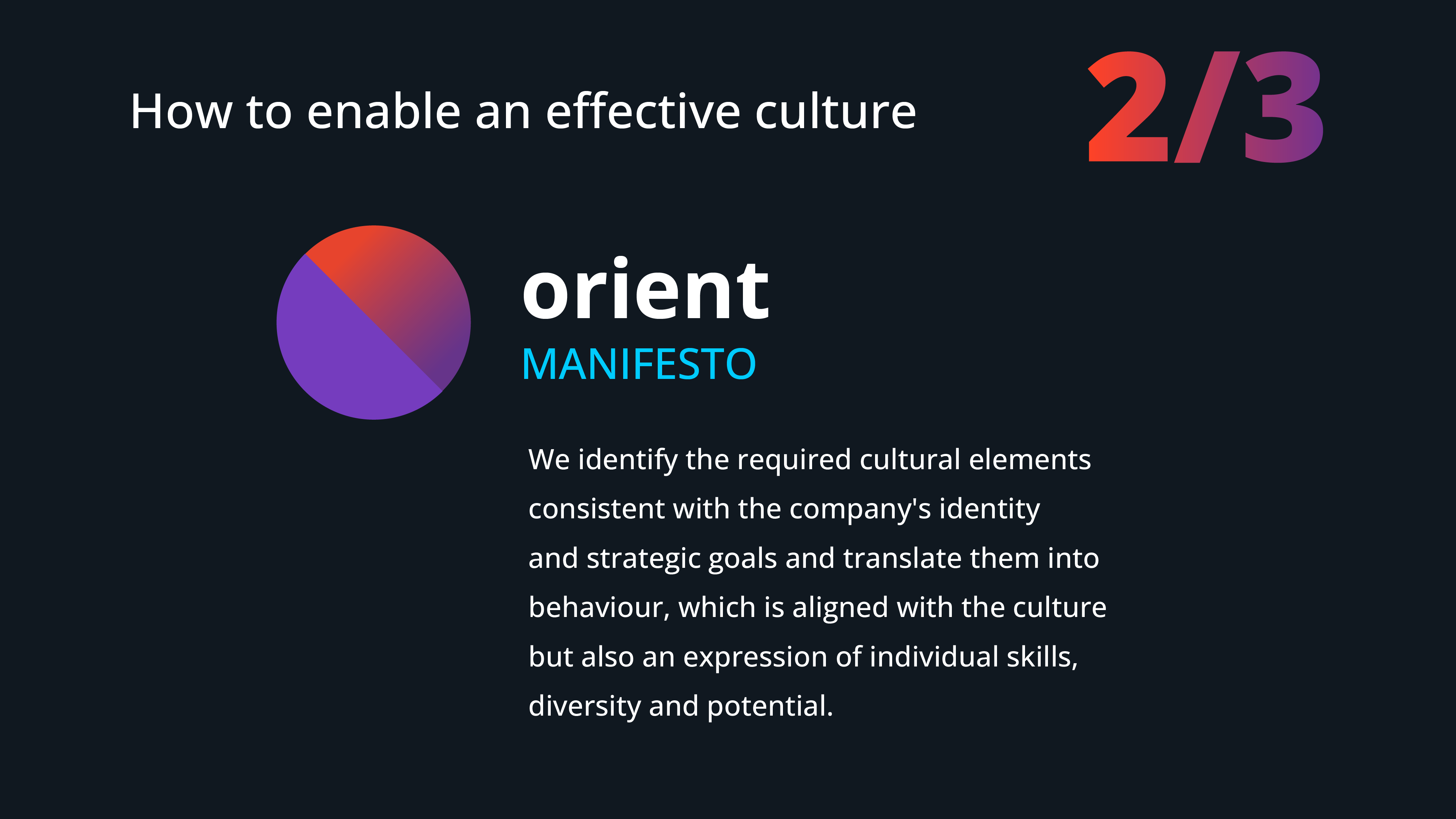
Source: Openknowledge
ACTIVATE – Move from declaration to action
In order for a culture not to remain simply a statement, it must be put into action in behaviors, relational dynamics, and decision-making effectiveness with concrete initiatives that affect the way people work, collaborate, and decide.
Therefore, we accompany organizations through real cultural activation and change management plans: experiences, artifacts, rituals, symbols, training, internal communication, new processes, and tools that support the desired change.
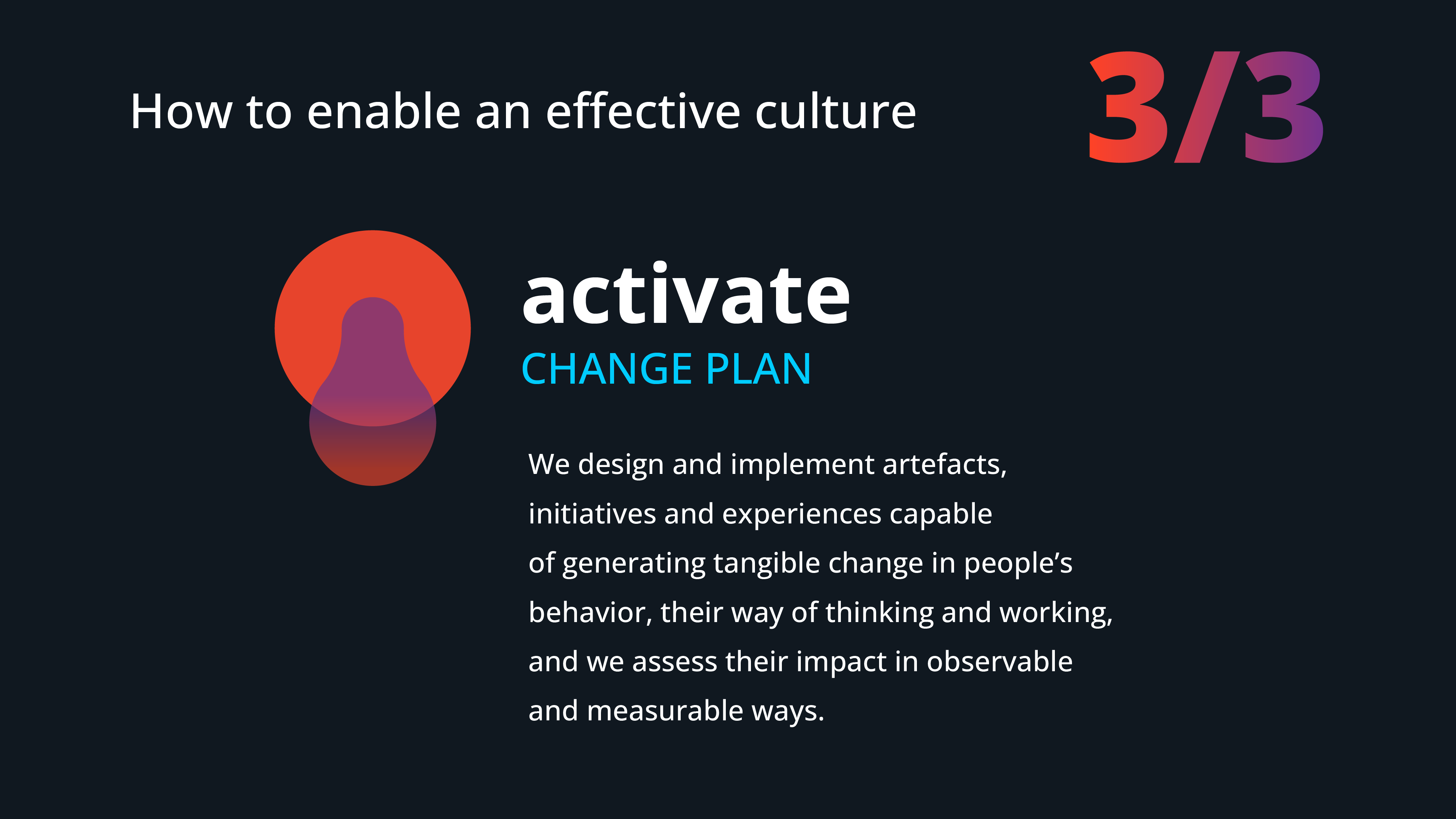
Source: OpenKnowledge
Some insights to be taken into consideration when (re)thinking the workplace experience
The social dimension must be intentional
With the physical dimension of the office disappearing as a given variable, human connections, once serendipitous and a foregone conclusion of space sharing, must now be a project objective. They no longer happen on their own: they must be enabled.
Leadership and trust enable higher flexibility
The context is increasingly fluid, and the antithesis to rigid and controlling para-digms, which are based on the observability of people at work, is made up of a culture based on leadership styles and managerial practices with high trust and widespread accountability, which generally allow people higher levels of flexibil-ity on workplace choice and still ensure positive behavior and concrete perfor-mance.
Space must become a proxy for culture
Space, physical, digital, symbolic, is a narrative medium. How it is designed and how we inhabit it can tell who we are, foster connections and collaborative practices, and influence motivation and a sense of belonging. In other words, it becomes a key tool for reinforcing the existing culture or changing the culture of a workplace.
Culture, therefore, becomes the key driver that also permeates the spatial dimension and around which to redesign an effective, meaningful and satisfying work experience for people.
Author
Silvia Basilico

 17 June 2025
17 June 2025

